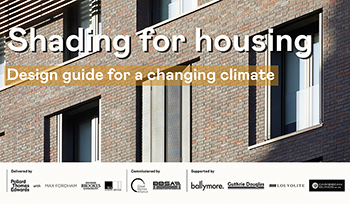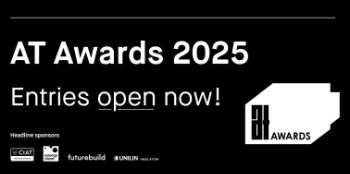Knowledge management in construction
Contents |
[edit] Introduction
Knowledge management (KM) is the process of making the best use of knowledge and information within an organisation to achieve objectives. It allows people to access and apply the most appropriate knowledge when it is needed and supports learning.
Construction is a knowledge-intensive industry relying on a wide range of knowledge from very many different sources. Explicit knowledge has been accumulated by the industry for many years in the form of research papers, databases, manuals, best practice guides, standards, procedures, and so on. Tacit knowledge is held by individuals who may have certain expertise and experience. This is more difficult to formalise, manage and share. A traditional route to sharing tacit knowledge was the relationship between master and apprentice.
However, the construction industry is not always effective at knowledge management. Projects often begin in a relatively disorganised way that makes them difficult to structure later, they may involve several organisations who may never have worked together before and may be reluctant to share intellectual property, they tend to be on-off bespoke undertakings, and when complete, the project team may break up and not work together again.
There is also generally a separation between research and practice that means important knowledge is often not applied.
This can result in continually 'reinventing the wheel' and the repetition of mistakes. The British Standards Institution (BSI) suggest that defects in the UK construction industry cost at least £20 billion to repair or rebuild every year and that many defects are the result of the inefficient use and communication of information. Despite this, relatively few companies in the construction industry have embraced knowledge management.
As construction becomes more complex, and clients more demanding, organisations must develop a structured and coherent approach to KM. This necessitates overcoming perhaps the biggest obstacle which is organisational culture, which can often prevent the open sharing of knowledge and expertise, even within a single organisation.
[edit] Benefits of KM
Some of the benefits of improving access to knowledge through effective KM include:
- More effective teamwork.
- Greater certainty and more effective decision making.
- Fewer mistakes.
- Less duplication of work.
- Less waste.
- Less reliance on the knowledge of key individuals.
- Faster and easier access to the most relevant and up-to-date information.
- Improve connections between partners, projects and parts of an organisation.
- More innovative thinking.
- More authoratitive communication.
- Greater client satisfaction.
Barriers to effective knowledge management can include:
- Lack of awareness of the potential benefits.
- Lack of understanding about how to implement a knowledge management strategy.
- Availability of time and resources.
- Senior management buy in.
- Lack of time to make decisions.
- Lack of awareness that knowledge exists.
- Difficulties finding appropriate knowledge.
- The risk of knowledge becoming out of date.
- A tendency to simply repeat past solutions.
- A belief that an organisation is too small to accumulate comprehensive knowledge.
- A reluctance to share knowledge, or a concern about intellectual property.
- Lack of awareness by staff that they hold valuable knowledge.
- Poor writing skills.
- Concern that the use of recorded knowledge could result in liability for problems.
[edit] Organisational strategy
When trying to develop an organisational KM strategy, groups or project teams should be interviewed or surveyed to address the following questions:
- What are the knowledge needs, both at present and in the foreseeable future?
- How is knowledge currently managed?
- How do people access and share knowledge?
- How is knowledge transferred from one project to another?
- How could current KM contribute more to the organisation’s objectives?
- What actions are needed?
From this, strategies for improving KM should begin to become evident. The next step is to develop an improvement plan.
[edit] Creating knowledge
It is common for construction firms to be required to innovate and generate bespoke solutions to overcome unique project-specific challenges. This creates new knowledge that must be effectively recorded and managed. This requires time and resources, and it is important that individuals are formally rewarded for their efforts, rather than knowledge creation being left to a few dedicated individuals who do it informally in their own time.
This may require that knowledge champions are identified to drive a knowledge management strategy, or that knowledge managers are appointed to implement the strategy.
Construction firms who are involved with more standard and repeatable work, should also be striving for greater efficiencies in terms of materials and waste production, improvement of standard processes, training and so on.
It is important that knowledge is created quickly, and in a way that is easy to share and will be helpful to others. See Standards below for more information.
Assessments made at the end of projects can be valuable sources of new knowledge:
- Performance in use.
- Post occupancy evaluation.
- Post project review.
- Soft landings.
- Lessons learned report.
[edit] Sharing knowledge
Project teams and individuals within an organisation should be encouraged and have appropriate means of being able to share their knowledge with others. Some of the ways in which this can be achieved are as follows:
[edit] Storytelling
Knowledge can be shared in a less formal, less academic way by presenting stories which are engaging and easy-to-understand. This is a particularly good way of sharing personal tacit knowledge. Presentations, talks and workshops are the best avenues for storytelling.
[edit] Workplace design
The design of a workplace can encourage greater interaction, and therefore, more sharing of tacit knowledge. ‘Breakout spaces’, communal areas, meeting rooms, areas of circulation, are all places that can break up the rigidity of the traditional office space and allow for communication and gatherings to occur.
[edit] Communities of practice (CoPs) / networking
CoPs are often encouraged by construction firms as they can provide a valuable mechanism for sharing and managing knowledge across projects, organisations and nations. They are networks of people who share common interest in a particular field of knowledge, who seek to develop and enhance their individual knowledge by sharing within the community. Organisations can encourage individuals to get involved in CoPs that are particularly relevant to them, or that will most benefit the organisation.
[edit] Mentoring
Mentoring is used to pass on knowledge from a more experienced staff member to others.
[edit] Directories
Searchable directories of staff setting out their roles, areas of expertise and giving contact details can be a simple way of giving access to tacit knowledge.
[edit] Extranets
Explicit knowledge should be organised and stored in a way that makes it accessible to those who wish to use it. On individual construction projects, extranets are commonly used to allow project team members to use and rely on the same shared up-to-date documents and information.
[edit] Policies
Where important knowledge should be implemented across an organisation, it may become embedded in behaviour by the introduction of a policy.
[edit] Intranets
Across organisations, intranets are commonly used as the single point of secure access to an organisation’s knowledge. This can be used alongside databases and other design and accounting packages. Intranets require careful content management procedures so as to ensure the information provided is reliable, up-to-date and easily-accessible. It can also be used as a message board to encourage a forum for tacit forms of knowledge to be shared.
[edit] Libraries and other knowledge resources
Many organisations will have their own technical libraries that staff can access to find information, and increasingly their are online resources, available for free or as subscription services that organisations will sign up to to ensure their staff have access to comprehensive, up to date knowledge.
[edit] Assessment
It is important that the success of knowledge management strategies is measured in some way, both to ensure continued business support for the resources required, and to allow ongoing improvement.
[edit] Standards
PD 7503:2003 Introduction to Knowledge Management in Construction provides an introduction to and highlights the benefits of knowledge management in the construction industry. It summarises the key issues that an organisation faces when introducing knowledge management and includes case studies which demonstrate the application of knowledge management in large and small construction industry companies. For more information see: PD 7503:2003 Introduction to knowledge management in construction.
Designing Buildings Wiki have argued that whilst we disseminate much of our knowledge electronically, sharing it across an array of different software applications, operating systems and devices, we generally prepare it as if it is going to be printed, often in pdf format, with all the limitations of hard-copy documents and exploiting few of the inherent benefits of electronic media. This makes knowledge unnecessarily difficult to prepare, publish, find, understand and use. A Construction industry knowledge standard has been drafted to find, use, publish and collaborate in its preparation. For more information see: Construction industry knowledge standard.
[edit] Building information modelling
Building Information Modelling (BIM) is a very broad term that describes the process of creating and managing digital information about a built asset such as building, bridge, highway, tunnel and so on. Fundamentally, the purpose of BIM is to ensure that appropriate information is created in a suitable format at the right time so that better decisions can be made throughout the design, construction and operation of built assets. For more information see Building Information modelling.
[edit] Related articles on Designing Buildings
- A new theory for managing large complex projects.
- Building information modelling.
- Collaborative practices.
- Common data environment.
- Construction industry knowledge standard
- Construction knowledge sources.
- Construction knowledge task group.
- Document control.
- Dynamic conditions for project success.
- Event celebrating two years of knowledge sharing
- ICT.
- ISO 30401 Knowledge management systems.
- Knowledge pyramid
- Modern Built Environment Knowledge Transfer Network MBEKTN
- Open data.
- PD 7503:2003 Introduction to knowledge management in construction
- Project extranet.
- Proposal for a standard method for the preparation of construction industry knowledge.
- Remote working and cloud-based BIM.
- Standard method and procedure.
Featured articles and news
Shading for housing, a design guide
A look back at embedding a new culture of shading.
The Architectural Technology Awards
The AT Awards 2025 are open for entries!
ECA Blueprint for Electrification
The 'mosaic of interconnected challenges' and how to deliver the UK’s Transition to Clean Power.
Grenfell Tower Principal Contractor Award notice
Tower repair and maintenance contractor announced as demolition contractor.
Passivhaus social homes benefit from heat pump service
Sixteen new homes designed and built to achieve Passivhaus constructed in Dumfries & Galloway.
CABE Publishes Results of 2025 Building Control Survey
Concern over lack of understanding of how roles have changed since the introduction of the BSA 2022.
British Architectural Sculpture 1851-1951
A rich heritage of decorative and figurative sculpture. Book review.
A programme to tackle the lack of diversity.
Independent Building Control review panel
Five members of the newly established, Grenfell Tower Inquiry recommended, panel appointed.
Welsh Recharging Electrical Skills Charter progresses
ECA progressing on the ‘asks’ of the Recharging Electrical Skills Charter at the Senedd in Wales.
A brief history from 1890s to 2020s.
CIOB and CORBON combine forces
To elevate professional standards in Nigeria’s construction industry.
Amendment to the GB Energy Bill welcomed by ECA
Move prevents nationally-owned energy company from investing in solar panels produced by modern slavery.
Gregor Harvie argues that AI is state-sanctioned theft of IP.
Experimental AI housing target help for councils
Experimental AI could help councils meet housing targets by digitising records.
BSRIA Occupant Wellbeing survey BOW
Occupant satisfaction and wellbeing tool inc. physical environment, indoor facilities, functionality and accessibility.























